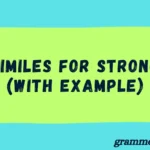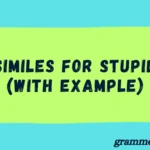In everyday writing, you’ve probably come across both “up to date” or“up-to-date” and wondered if there’s a real difference—or if it’s just a stylistic choice. While they look similar, the difference lies in grammar usage and context. “Up to date” (no hyphens) acts as a predicate adjective, used after verbs like is or are, as in “The information is up to date.” On the other hand, “up-to-date” (with hyphens) is an attributive adjective, meaning it comes before a noun, like in “up-to-date software.” Getting this right improves your writing clarity, grammar accuracy, and professional tone. In this guide, we’ll break down their correct usage, provide examples, and help you master one of English’s most commonly confused adjective forms.
Quick Answer: What’s the Difference Between Up to Date and Up-to-Date?
At its core, the difference boils down to grammar and usage:
| Phrase | Function | Usage Example | Hyphenation |
| Up to date | Adverbial phrase | “Make sure your software is up to date.” | No hyphens |
| Up-to-date | Adjective | “We need up-to-date software versions.” | Hyphens between words |
Simply put, “up to date” acts like an adverb, modifying verbs (telling how something is done). On the other hand, “up-to-date” acts as an adjective, modifying nouns (telling which kind of thing).
Why Is There So Much Confusion About Up to Date and Up-to-Date?
English can be a tangled web — and hyphenation is one of its trickiest threads. Many writers get mixed up because:
- Hyphens sometimes look optional but can change meaning drastically.
- Digital communication blurs traditional grammar rules.
- Some style guides differ slightly in recommendations.
- Auto-correct and spellcheck tools don’t always catch misuse.
- The phrase is common and informal, leading to inconsistent use.
Plus, the phrase’s increasing use in emails, marketing, and social media means many people copy what they see without knowing the grammar behind it.
What Does “Up to Date” Really Mean?
When you see up to date without hyphens, it’s usually functioning as an adverbial phrase. It modifies verbs and explains the state or condition of an action or process.
Examples:
- “I keep my antivirus software up to date.”
- “Please make sure your contact details are up to date.”
- “They updated the records to keep them up to date.”
Why is this an adverb?
Because it answers the question how? or to what extent? For example, in the sentence “I keep the files up to date,” the phrase tells how you keep the files — continuously updated.
What Does “Up-to-Date” Really Mean?
When you use up-to-date with hyphens, it’s an adjective phrase. It describes a noun by telling you something about its quality or status.
Examples:
- “We offer up-to-date training courses.”
- “The up-to-date statistics helped us make decisions.”
- “She always uses up-to-date technology.”
Why hyphenate?
Hyphenating combines multiple words into a single adjective modifying a noun. Without hyphens, the meaning can become unclear or the sentence harder to parse.
Up to Date vs. Up-to-Date: Side-by-Side Comparison
| Aspect | Up to Date | Up-to-Date |
| Part of Speech | Adverbial phrase | Adjective phrase |
| Hyphen Usage | No hyphens | Hyphens between all three words |
| Placement in Sentence | Usually after verbs | Usually before nouns |
| Function | Modifies verbs, explains how | Modifies nouns, describes quality |
| Example Sentence | “The software is up to date.” | “We use up-to-date software.” |
| Formality | Neutral to informal | Formal and correct in writing |
When to Use “Up to Date”
You should use up to date when the phrase describes how something is done or the state of something relative to time, and it comes after the verb.
Examples where “up to date” works best:
- “Make sure your records are up to date before submission.”
- “I updated the schedule so it’s up to date.”
- “Is your website content up to date?”
Tips for using “up to date”:
- Place it after the verb it modifies.
- Avoid hyphens here — they’re grammatically incorrect.
- Use in business communication, casual writing, and instructions.
When to Use “Up-to-Date”
Use up-to-date when it directly modifies a noun, usually placed before the noun it describes.
Examples:
- “We need an up-to-date database.”
- “Please provide your up-to-date contact information.”
- “Their up-to-date knowledge made the difference.”
Tips for using “up-to-date”:
- Always hyphenate when it acts as an adjective.
- Place it before the noun.
- Essential in formal writing, resumes, marketing, and journalism.
The Importance of Grammatical Context
Context is king when deciding whether to hyphenate.
- If you describe a noun, hyphenate.
- If you describe how something is done (verb), don’t hyphenate.
This rule saves you from common mistakes that weaken professionalism in writing.
Common Mistakes and How to Avoid Them
People often confuse the two, leading to mistakes such as:
- Incorrect: “Our software is up-to-date.” (Wrong — it’s describing the verb “is” so no hyphen)
- Incorrect: “We use up to date software.” (Wrong — adjective before noun requires hyphen)
How to avoid:
- Ask: Am I describing a noun or a verb?
- When unsure, rewrite sentences to avoid confusion.
- Use grammar checking tools but double-check their suggestions.
- Consult reputable style guides.
What Style Guides Say About Up to Date and Up-to-Date
| Style Guide | Recommendation |
| AP Stylebook | Uses up to date without hyphen when used predicatively (“The system is up to date”). Hyphenates when used attributively before a noun (“up-to-date system”). |
| Chicago Manual of Style | Similar guidance: hyphenate when used before nouns, no hyphen when used after verbs. |
| Oxford Style Guide | Follows same rules: hyphenate compound adjectives before nouns, no hyphen after verbs. |
In practice, most authoritative guides agree on the hyphenation rule based on grammatical function.
Synonyms for Up to Date and Up-to-Date
Synonyms for “Up to Date” (Adverbial Phrase)
- Current
- Informed
- Caught up
- Updated
- In the loop
Example:
“Stay informed with the latest company policies.”
Synonyms for “Up-to-Date” (Adjective Phrase)
- Modern
- Current
- Latest
- Cutting-edge
- State-of-the-art
Example:
“Our cutting-edge software improves productivity.”
How to Choose the Right Phrase or Synonym
Context shapes your choice:
- For formal reports or resumes, prefer up-to-date as an adjective.
- In emails or instructions, up to date works better.
- When you want to sound modern or trendy, try synonyms like cutting-edge or state-of-the-art.
Examples in Real-World Context
Using “Up to Date” (Adverbial)
- “Please make sure your client information is up to date before the meeting.”
- “I keep my certifications up to date by taking yearly courses.”
- “They ensure all data is up to date before publishing.”
Using “Up-to-Date” (Adjective)
- “The company uses up-to-date security protocols.”
- “She brought an up-to-date portfolio to the interview.”
- “Our up-to-date website design attracts more visitors.”
Origins and Etymology of Up to Date and Up-to-Date
- The phrase “up to date” dates back to the early 1800s in English, used to describe something current or timely.
- The hyphenated “up-to-date” form emerged later, as English grammar evolved to clarify compound adjectives.
- This change helped writers differentiate between descriptive adjectives and adverbial phrases, improving clarity.
Final Tips and Recap
- Use up to date (no hyphens) after verbs to describe the state of being current.
- Use up-to-date (hyphenated) before nouns as an adjective.
- When in doubt, rewrite your sentence or consult a style guide.
- Hyphenation is not optional when acting as an adjective — it makes your writing clear and professional.
Table: When to Use “Up to Date” vs. “Up-to-Date”
| Usage Situation | Correct Form | Example |
| After a verb (adverbial phrase) | Up to date | “Your information is up to date.” |
| Before a noun (adjective phrase) | Up-to-date | “We need an up-to-date report.” |
| Talking about modern features | Up-to-date (adj) | “Up-to-date software is crucial.” |
| Describing how often something is done | Up to date (adv) | “I keep my skills up to date.” |
FAQS
1. Is there a hyphen in “up to date”?
No, not when used after a verb as an adverbial phrase. For example: “Your records are up to date.” No hyphen needed here.
2. Is “up to date” 3 words?
Yes, when unhyphenated, “up to date” consists of three separate words used as an adverbial phrase.
3. Should “stay up to date” be hyphenated?
No, because it follows a verb (“stay”), it remains an adverbial phrase and should not be hyphenated: “Stay up to date.”
4. Is there a hyphen between “to date”?
No, never hyphenate just “to-date.” The entire phrase becomes hyphenated only when used as an adjective: “an up-to-date guide.”
Final Thoughts + Challenge for You
In conclusion, the choice between “up to date” and “up-to-date” depends entirely on how the phrase is used in a sentence. Use “up-to-date” when it’s an adjective describing a noun (e.g., up-to-date software), and “up to date” when it’s part of a verb phrase (e.g., stay up to date).
Whether you’re writing for a blog, email, or professional document, using the correct form shows that you’re attentive, knowledgeable, and, yes—up to date with your grammar. In this quick guide, we’ll break down the rules, offer examples, and clarify usage to keep your writing accurate, readable, and professionally polished. Let’s explore how to stay truly up to date—or should we say, up-to-date?

Mariah Cannon is the dedicated educator behind GrammerHome.com, committed to making English grammar clear, engaging, and confidence-boosting. With years of teaching experience and a passion for effective communication, Mariah specializes in breaking down complex grammar rules into bite-sized, easy-to-apply lessons.




